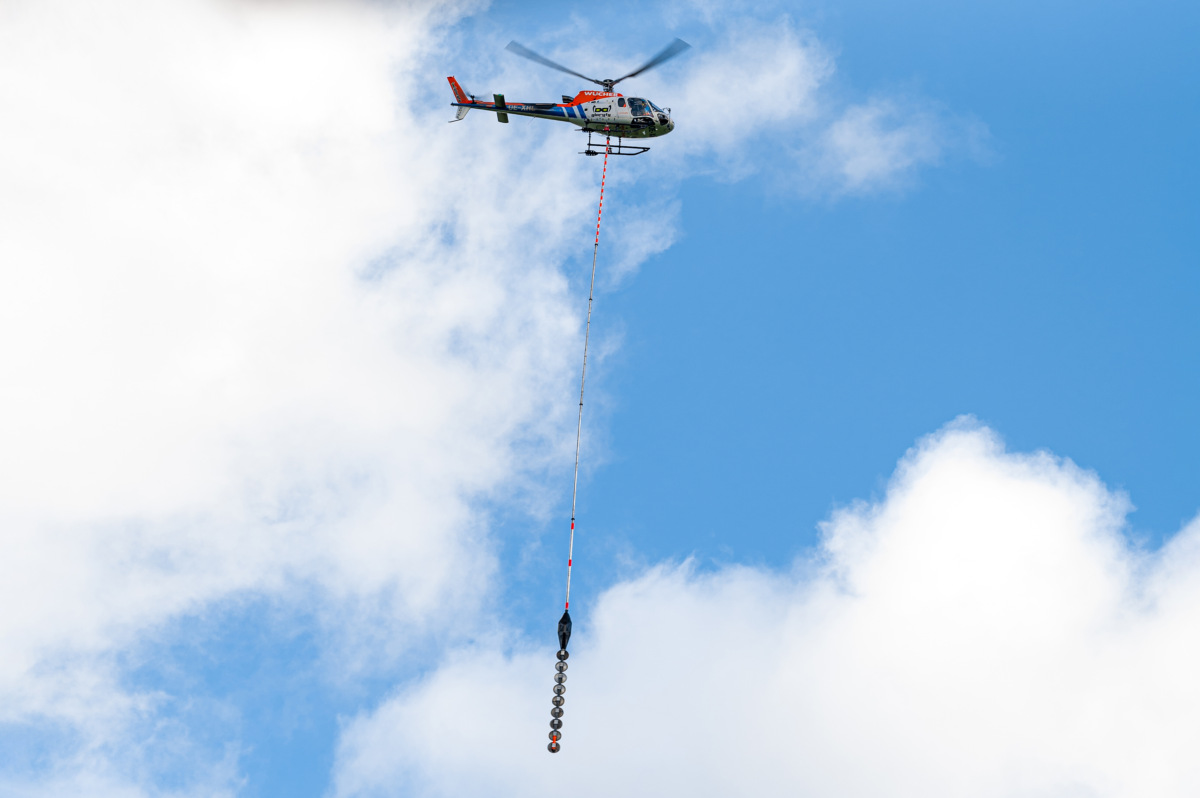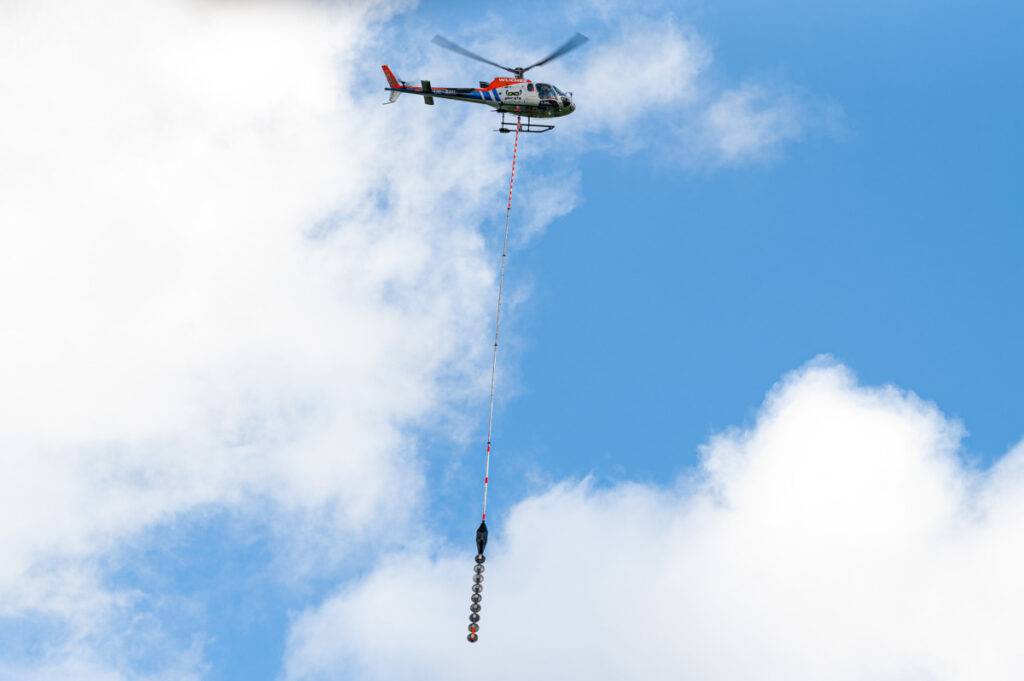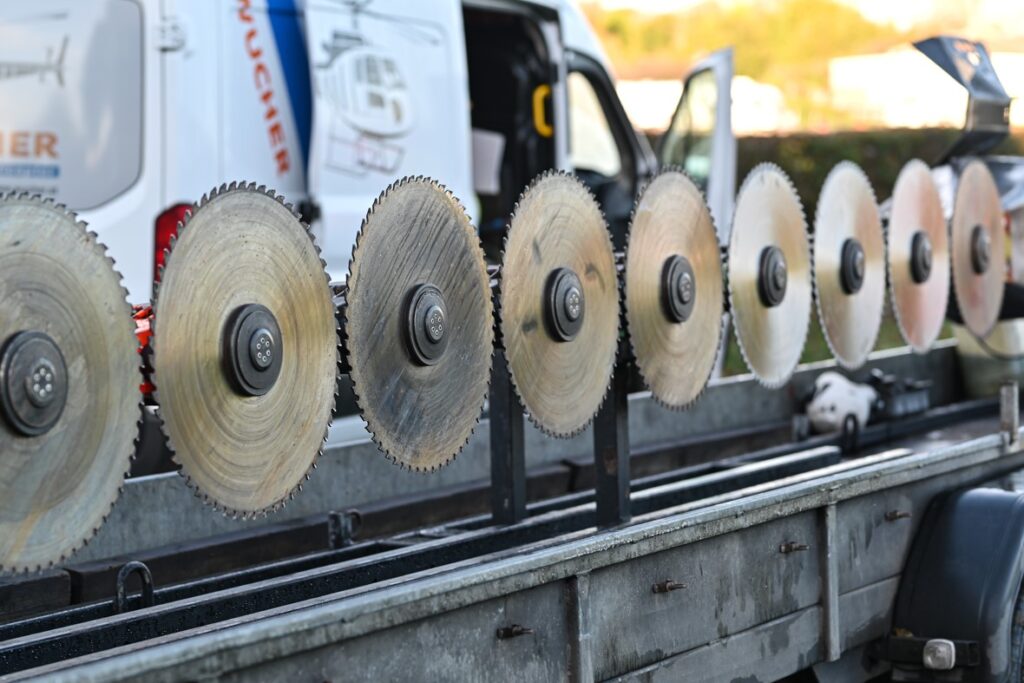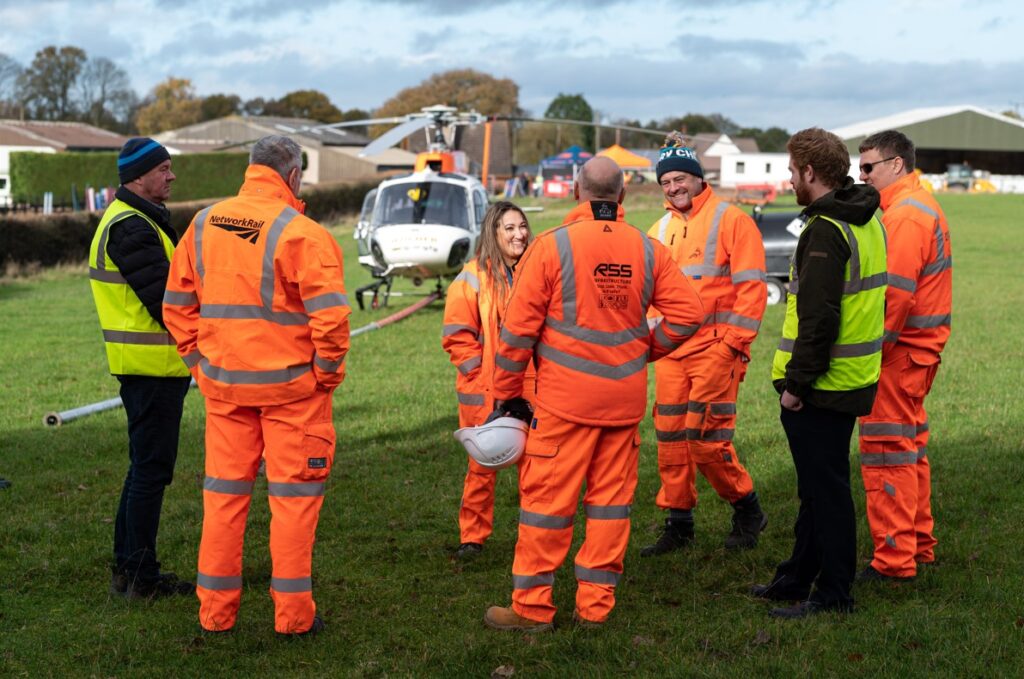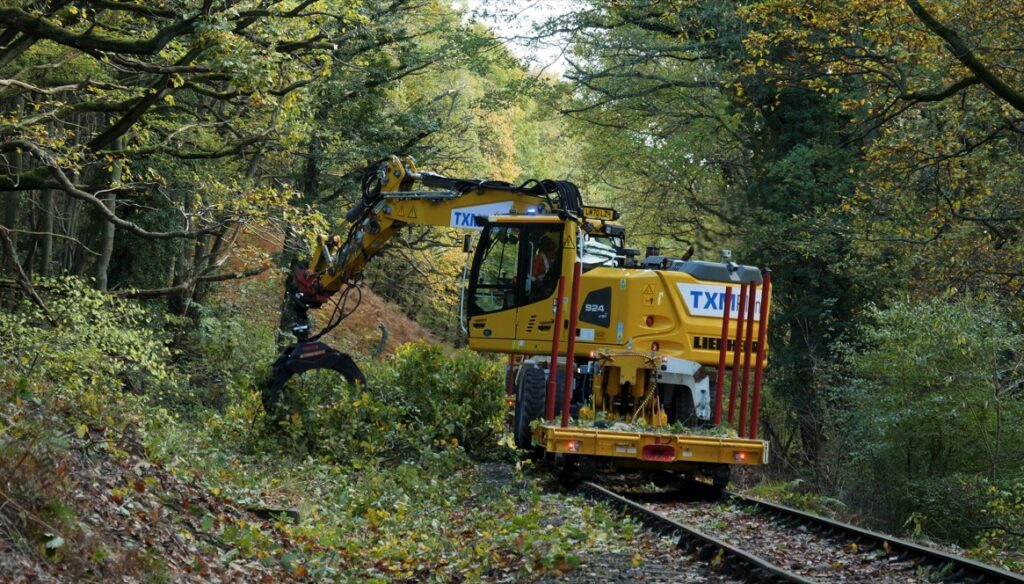Intro: In partnership with Tiger Aviation, RSS Infrastructure (RSSI) showcased the impressive cutting power and speed of the aerial saw last week at Pound Green Airfield, near Bewdley. This demonstration showed how well the aerial saw works to cut back trees near railway lines.
As an example, the aerial saw cleared a 300-metre section of the lineside vegetation, including oak trees, in just 15 minutes. The ground crew, made up of arborists and chainsaw operators, had help from TXM Plant’s Road Rail Vehicle with a 360° grabber and a commercial chipper, which made quick work of cleaning up in about 45 minutes.
Graham Talbot, Head of Arboriculture at RSSI, said, “It was great to see the aerial saw in action at the Severn Valley Railway. A few minutes of cutting time is the equivalent of one day of traditional arborist work. There will always be a place for a more traditional approach, but the aerial saw combined with track-based plant is unmatched for clearing large sections efficiently and safely.”
When he first saw the aerial saw a few years ago, Alan Ramsden of Tiger Aviation was impressed, and he teamed up with RSSI to bring it to the UK.
“As an experienced helicopter pilot, I realised the aerial saw’s potential as soon as I saw it in use; this technology has been used in Central Europe and North America for over 30 years, but this demonstration is the first time it has been shown in the UK; initially, we will focus on the rail sector, but it can also be used very effectively in the road and utilities sectors.”
One of the challenges on the rail network is that hundreds of trains are damaged annually by overgrown foliage across the UK. This foliage also damages infrastructure, impedes sight lines, and blocks access. Tree overhang has reached dangerous levels across the rail network. The aerial saw is an effective solution to this ongoing challenge. It can be flown into remote locations that are difficult to access using traditional ground-based methods.
Alan continued, “The whole aerial saw operation is risk assessed to the satisfaction of the UK Civil Aviation Authority (CAA), which issues specific approvals for any work. The CAA also monitors and audits all operations to maintain the highest levels of safety at all times.”
Tiger Aviation and RSSI collaborated with Severn Valley Railway to make the demonstration possible. RSSI asked several clients from the rail sector and representatives from the Department of Transport and HS2 to come and see this new technology for managing lineside trees.
RSS Infrastructure CEO, Richard Toy noted, “In comparison to the 3–4 weeks it would have taken using traditional tree management methods, the aerial saw is a safe, fast, and efficient method. Based on the feedback at the event, RSSI customers can’t wait to use this innovative cutting technology, which will revolutionise tree management in the UK.”
On average, the aerial saw can trim between 1 and 3 miles daily. It would take a ground-based crew about one week to complete the same amount of work that could be achieved with the aerial saw in one hour of flying.
Using the aerial saw could mean that a Vegetation Management team spends more than 70% of their time on-site cutting back trees and foliage, increasing operational efficiency. The aerial saw is particularly effective when there are long distances to the right-of-way access to the railway.
The aerial saw can access rugged terrain, wetlands, and other sensitive areas without causing harmful environmental damage. Roads are protected from damage by reducing trips made by heavy equipment during scheduled work.
If you’re looking for more information about the aerial saw, contact Graham Talbot, Head of Arboriculture at RSSI on 0330 113 0004 or email arb@rssinfrastructure.com.
